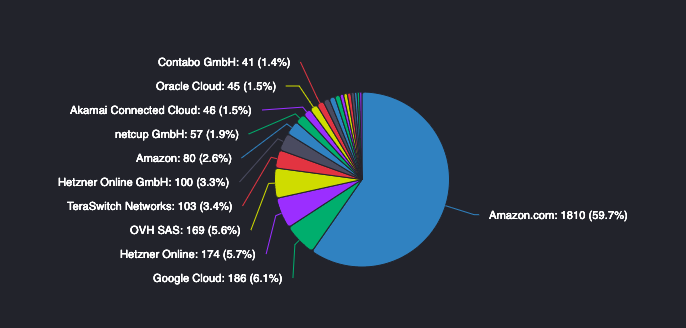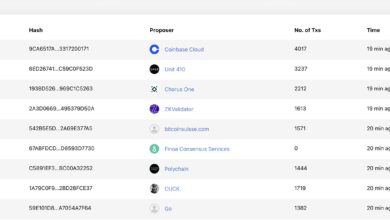Vitalik Buterin on repair for Ethereum centralization — make operating nodes simpler

[ad_1]
The centralization of nodes is likely one of the largest issues going through the Ethereum community and must be addressed by making the operating of nodes cheaper and simpler, in response to Ethereum co-founder Vitalik Buterin.
At present, nearly all of the 5,901 lively Ethereum nodes are being run by centralized net suppliers like Amazon Internet Providers (AWS), which many consultants declare leaves the Ethereum blockchain uncovered to a centralized level of failure.

Talking at Korea Blockchain Week, Buterin outlined six key issues that want addressing to resolve centralization however highlighted that the node situation was a “huge piece of the puzzle” to make sure the Ethereum community stays decentralized in the long term.
“A type of six issues is making it technically simpler for folks to run nodes and statelessness is likely one of the actually necessary applied sciences in doing that proper,” he defined.
“As we speak, it takes a whole bunch of gigabytes of information to run a node. With stateless shoppers, you may run a node on mainly zero.”
The idea of statelessness refers to eradicating the reliance on centralized service suppliers to confirm exercise on the community. In line with the Ethereum foundation, true decentralization shouldn’t be doable till node operators can run Ethereum on “modest” and cheap {hardware}.
As Buterin famous, statelessness varieties a key part of the Ethereum roadmap, with main steps in direction of statelessness being made in “The Verge” and “The Purge” levels:
“In the long term there’s a plan to take care of totally verified Ethereum nodes the place you could possibly actually it in your cellphone.”
Up to date roadmap diagram! pic.twitter.com/MT9BKgYcJH
— vitalik.eth (@VitalikButerin) November 4, 2022
Regardless of statelessness forming a core a part of the Ethereum roadmap, Buterin admitted that these highly-technical issues have been unlikely to be addressed any time within the instant future.
“These technical issues should be addressed ultimately — perhaps a 10-year timescale, perhaps a 20-year timescale,” he mentioned.
Associated: Ethereum staking companies conform to 22% restrict of all validators
Exterior of statelessness, Buterin mentioned the next-most vital strikes in direction of lowering Ethereum centralization included, making documentation simpler, reducing obstacles to distributed staking, making certain staking was safer and extra broadly; making it extra handy to stake Ether (ETH) usually.
In the end nevertheless, Buterin concluded that probably the most time-sensitive and urgent concern for Ethereum as complete was attaining larger ranges of scalability.
At current, Ethereum scaling protocols dominate using zero-knowledge (ZK) rollups.
ZK-rollups have been lauded by many throughout the Ethereum neighborhood as a key device to attaining scalability, as ZK rollups work to enhance throughput on the principle Ethereum chain by shifting computation and state-storage off chain.
Journal: Right here’s how Ethereum’s ZK-rollups can turn into interoperable
[ad_2]
Source link




